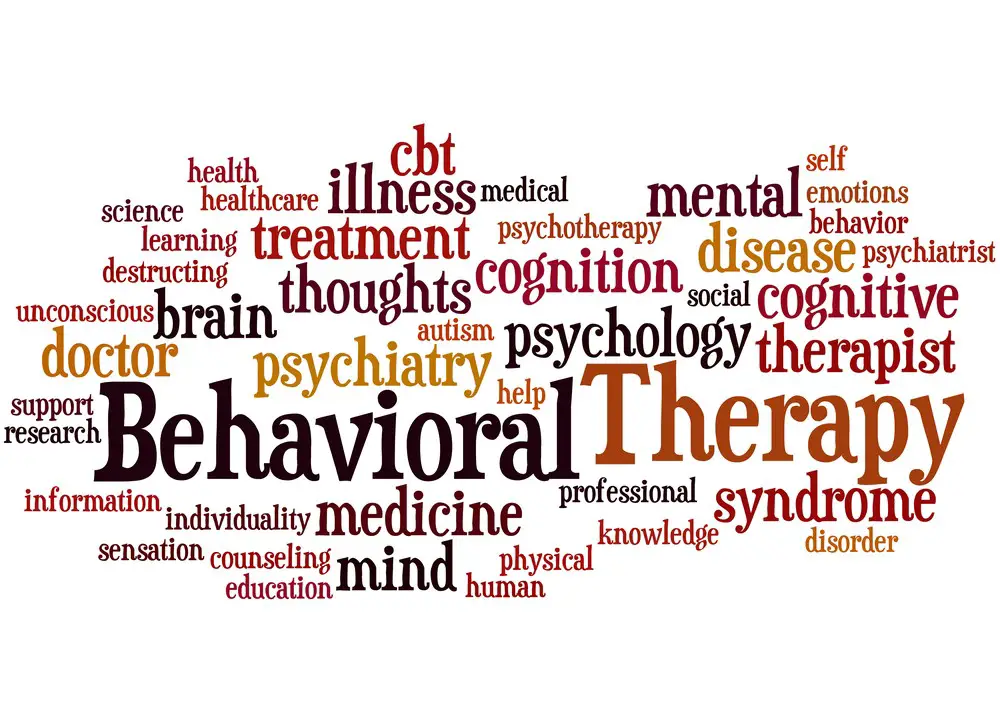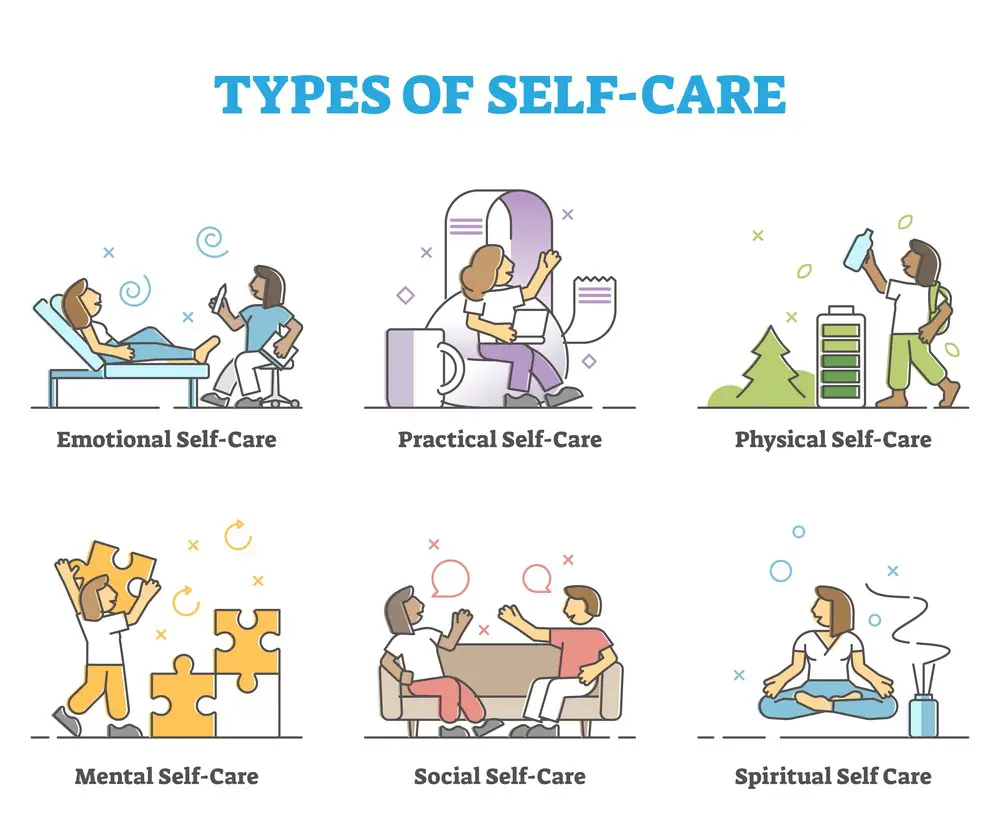As a BetterHelp affiliate, we receive compensation from BetterHelp if you purchase products or services through the links provided
Therapists who spend their careers attending to the well-being of others often face a unique set of emotional and psychological challenges that stem from their line of work. These professionals need to maintain their mental health, yet prioritizing their self-care can sometimes be overlooked. Therapy provides therapists a space to explore their feelings, develop coping strategies, and receive support without judgment.
Engaging in therapy can also aid therapists in their professional development, enhancing their ability to empathize with clients and thus improving their practice. Just like clients, therapists require a confidential environment to address their life stresses, experiences of transference or countertransference, and any personal mental health conditions that might arise. Furthermore, therapy for therapists enables them to navigate the complexities related to dual relationships and confidentiality within their therapeutic processes.
Key Takeaways
- Therapy for therapists is crucial for maintaining their mental health and enhancing their professional capabilities.
- Therapists benefit from discussing their professional challenges and personal issues in a confidential environment.
- The process supports therapists in managing the intricacies of their work, including transference and ethical considerations.
 Understanding the Need for Therapist Therapy
Understanding the Need for Therapist Therapy
Therapists face unique challenges in their line of work, requiring attention to their mental health to effectively cater to the needs of their clients.
Combatting Professional Burnout
Burnout creeps up on you subtly, often a blend of emotional exhaustion and reduced accomplishment. As a therapist, recognizing the signs early can be crucial:
- Feelings of energy depletion or fatigue.
- Increased mental distance from one’s job, or feelings of negativism or cynicism related to one’s job.
- Reduced professional efficacy.
To address these symptoms, here are some strategies:
- Set clear boundaries between work and personal life to prevent overlap.
- Regularly schedule breaks throughout your workday; even short intervals can help.
- Maintain a hobby or activity outside of your practice that refreshes you mentally.
Key Takeaway: Regular self-assessment for signs of burnout can help you maintain your professional vitality.
 Managing Vicarious Trauma
Managing Vicarious Trauma
Constant exposure to others’ trauma may lead you to experience similar stress or trauma symptoms, known as vicarious trauma. Shielding your mental health requires:
- Acknowledgment that vicarious trauma is a real and valid concern.
- Formulation and adherence to a self-care plan that allocates time for relaxation and reflection.
- Seeking your therapy to process the secondary trauma experienced in sessions.
Consider these tips to alleviate vicarious trauma:
- Create a daily routine of mindfulness practices to keep yourself grounded.
- Build a support network with fellow therapists who can relate to your experiences.
- Engage in regular supervision to debrief and gain perspective.
Key Takeaway: Proactive management of vicarious trauma is critical in sustaining your mental health and efficacy as a therapist.

Types of Therapy for Therapists
Supporting your mental health is critical to providing high-quality care to others. Exploring the appropriate therapeutic strategies ensures you can continue your practice sustainably.
Individual Therapy and Its Benefits
Individual therapy offers a confidential space to explore personal challenges with a therapist. Benefits for psychologists include:
- Self-reflection: You better understand your thoughts, emotions, and behaviors.
- Professional growth: Therapy insight can enhance empathy and effectiveness with clients.
Key takeaway: Individual therapy empowers self-care and professional development.
The Value of Group Therapy for Professionals
Group therapy provides a unique dynamic, allowing you to benefit from the diverse perspectives of peers. It serves as a mirror for understanding group processes, which can be insightful for your practice. Advantages of group therapy involve:
- Shared experiences: Strengthening your sense of community and reducing feelings of isolation.
- Collective wisdom: Learning from the struggles and strategies of others.
Key takeaway: Group therapy enriches your perspective through communal support and shared learning.
 Peer Supervision and Support Groups
Peer Supervision and Support Groups
Peer supervision and support groups are an invaluable resource. They provide a platform for practicing therapists like you to discuss cases and receive feedback in a structured yet informal setting. Specific gains include:
- Enhanced skills: Fine-tuning your therapeutic techniques through peer feedback.
- Support network: Building a reliable support system that understands the intricacies of your work.
Key takeaway: Peer groups foster continuous improvement and offer solid support systems tailored for therapists.
 The Therapeutic Relationship in Self-Therapy
The Therapeutic Relationship in Self-Therapy
In self-therapy, you must create a sturdy framework for your therapeutic relationship, recognizing the necessity of boundaries and professionalism to ensure a healthy and effective therapy journey.
Setting Boundaries with Clients
- Define your limits: Communicate what is acceptable within the therapist-client dynamic.
- Consistency is key: Maintain your boundary rules throughout all sessions.
Example: If you agree to not accept calls after hours, ensure this is followed without exceptions.
Key Takeaway: Firm boundaries establish respect and a sense of security within the therapeutic relationship.
Maintaining Professionalism in Dual Roles
- Role Clarity: Emphasize the distinction between your professional role and other personal interactions outside therapy sessions.
- Conflict of Interest: Be vigilant and address potential conflicts immediately to prevent complications.
Strategy: When faced with a dual relationship, transparently discuss how this may impact the therapy to manage expectations.
Key Takeaway: Upholding professionalism in dual roles is vital to protect the integrity of the therapeutic relationship.
Training and Continued Professional Development
Therapists must engage in ongoing training and professional development to ensure they provide the highest quality of care. You’ll discover new techniques, deepen your existing knowledge, and expand your areas of expertise through well-structured educational programs.
Workshops and Seminars
- Participation in Workshops: Stay ahead by attending interactive workshops. They often focus on practical skills and case studies, directly enhancing your therapeutic practice.
- Benefits of Seminars: Seminars keep you abreast of the latest research findings and theoretical advancements in your field. They provide a platform for intellectual engagement with peers.
Key Takeaway: Prioritize workshops and seminars that align with your specialties and where you aim to grow professionally.
Certification and Specialization
- Path to Certification: Certification through a recognized board validates your skills and knowledge, offering assurance of your professional competency to clients.
- Emphasis on Specialization: Pursuing a specialization allows you to become an authority in a specific area of expertise. This can lead to increased credibility and a unique niche in the therapeutic community.
Key Takeaway: Consider certifications and specializations as investments in your career that can lead to long-term professional growth and success.
Integrating Personal Therapy into Practice
Personal therapy for therapists is a vital tool for maintaining the quality and effectiveness of their practice. It enhances self-awareness and professional resilience.
Using Self-Reflection to Enhance Effectiveness
Self-reflection is the cornerstone of personal development in therapy. By turning inwards, you can:
- Uncover biases that may affect your practice.
- Evaluate the impact of your personal experiences on therapeutic relationships.
Strategically, use journaling to track your thoughts, feelings, and reactions after sessions. Target specific goals through self-reflection, like improving empathy or honing your ability to set clear boundaries.
Key Takeaway: Regular self-reflection enables you to continuously sharpen your therapeutic skills and stay attuned to your personal growth.
 Modeling Self-Care for Clients
Modeling Self-Care for Clients
Your self-care practices directly model healthy behavior for your clients. By prioritizing your well-being, you demonstrate:
- The importance of setting aside time for self-care routines.
- Tactics for dealing with stress and preventing burnout.
Consistently include self-care in your schedule, such as mindfulness meditation or regular exercise. Remember, transparently talking about your self-care can sometimes reinforce its significance to clients.
Key Takeaway: Self-care is a private endeavor and a professional duty to embody the principles you advocate for in therapy.
Addressing Therapists’ Mental Health Conditions
As a therapist, you are well-acquainted with the weight of others’ emotional burdens. Recognizing and addressing your own mental health needs is just as crucial to sustaining your ability to support your clients effectively.
Recognizing Signs of Depression and Anxiety
Depression: If you’re feeling persistent sadness, a loss of interest in activities, or fatigue, these could be signs of depression.
- Symptoms: Watch for changes in:
- Sleep patterns
- Appetite
- Concentration
Anxiety: Symptoms such as excessive worry, irritability, or problems with sleep are signals that you may be experiencing anxiety.
- Physical Signs: Note any physiological feedback like:
- Increased heart rate
- Muscle tension
Self-observation: Regularly check in with your emotions and physical sensations to catch these signs early.
Key Takeaway: Early recognition of depression and anxiety signs enables you to seek timely intervention.
Therapy for Complex Trauma and PTSD
Complex Trauma: Experiencing multiple or prolonged traumatic events can lead to complex trauma, which might manifest as difficulties in emotional regulation or beliefs about oneself.
- Strategies:
- Seeking peer supervision
- Engaging in long-term therapy
PTSD: If as a therapist, you face intrusive memories, avoidance behaviors, or heightened reactions, you could be grappling with PTSD.
- Approach:
- Consider trauma-focused therapy modalities, such as EMDR or CBT.
- Establish a self-care routine that grounds you and provides respite.
Self-Care Emphasis: Balance work demands with activities that replenish your mental health.
Key Takeaway: Engaging in therapy and self-care practices are essential steps in addressing the impacts of complex trauma and PTSD on therapists.
Financial and Insurance Considerations
Effective financial planning and understanding insurance intricacies are vital to running a successful therapy practice.
Managing Therapy Costs
Your primary goal is to provide quality mental health services, but keeping a watchful eye on your operational costs to sustain your practice is essential. Here are some strategies to manage these expenses effectively:
- Set Realistic Fees: Align your fees with the quality of service you offer, local market rates, and your experience level.
- Control Overhead: Rent, utilities, and office supplies can add up. Audit regularly to ensure you’re not overspending.
Insurance Coverage for Mental Health Professionals
It would be best if you navigated the insurance landscape with ease. Here’s how to stay informed:
- Understand Your Policy: Know what your insurance covers regarding liability and professional coverage.
- Stay Updated: Insurance policies can change. Keep abreast of these changes to ensure you’re always compliant.
Key Takeaway: Efficiently managing your expenses and staying informed about insurance coverage ensures financial stability for your therapy practice.
Online Therapy and Technological Tools
In recent years, you’ve probably noticed a prominent shift to online therapy, a move significantly enhanced by integrating sophisticated telehealth technologies that ensure secure and effective treatment.
Telehealth Advancements
Today, telehealth is a crucial aspect of mental health services. You have access to platforms designed for video conferencing that are specifically tailored for therapeutic sessions. These platforms often include:
- HD Video Quality: This ensures that non-verbal cues are not lost, a fundamental part of the therapeutic process.
- Interactive Features: Such as real-time chat and screen sharing can enhance communication between you and your clients.
- EHR Integration: Electronic Health Records (EHRs) integrate seamlessly with telehealth services so you can manage client records and notes efficiently.
Moreover, innovations like artificial intelligence (AI) are beginning to play a role in triage and initial assessments, giving you tools to manage your caseload more effectively.
Key Takeaway: Embrace the latest telehealth tools to offer high-quality, interactive, seamless online therapy experiences.
Privacy and Security in Online Sessions
When conducting therapy online, your priority must always be to uphold the privacy and security of your sessions. Regulations like HIPAA in the United States dictate stringent standards. Ensure that:
- Secure Platforms: Your telehealth platform should offer end-to-end encryption and comply with regional privacy laws.
- Client Consent: Make certain clients are informed about how their data is handled and obtain their explicit consent.
- Regular Audits: Conduct routine security checks and updates to safeguard against data breaches.
These efforts help build trust with your clients and ensure their confidential information stays protected.
Key Takeaway: Protect client confidentiality with secure, compliant platforms and informed consent, maintaining trust and integrity in your therapeutic practice.
Cultural Competence and Diverse Clientele
Recognizing and respecting clients’ diverse cultural backgrounds and identities is vital to providing effective therapy.
Understanding Cultural Backgrounds
Cultural background influences perceptions, behaviors, and responses to therapeutic interventions. Familiarize yourself with cultural norms and values to better understand a client’s perspective. Consider these tips when approaching cultural backgrounds:
- Start by asking clients about their cultural identity and what matters most.
- Learn about the potential impact of cultural stigma on mental health within different communities.
- Be aware of cultural-specific expressions of distress; what seems like a common symptom might have different connotations in another culture.
Key Takeaway: Stay informed and sensitive to the cultural nuances that affect your clients’ experiences and worldviews.
Inclusive Practices in Therapy
Inclusive therapy practices ensure that all clients, regardless of gender, cultural background, or community, feel respected and understood. Here’s how to embed inclusive practices in your work:
- Use inclusive language that acknowledges and respects a client’s gender identity and pronouns.
- Employ flexible counseling techniques that adapt to various cultural expressions of emotion and communication styles.
- Design your therapy space to be welcoming to all, with symbols or items from various cultures or none at all to maintain neutrality.
Key takeaway: Inclusive practices are not just a check on a list—they are ongoing efforts to create a therapeutic environment where every client feels seen and supported.
Practical Aspects of Therapy for Therapists
When you’re providing therapy, practicalities like time management and service accessibility can’t be sidelined. They’re the cogs keeping your practice running smoothly.
Scheduling and Time Management
Good scheduling secures order in your workday. To avoid burnout and ensure you’re at your best for each client, consider these steps:
- Set clear boundaries for work hours to maintain a balance between your professional and personal life.
- Use digital tools like calendar apps that send reminders, allowing space between sessions.
- Prioritize tasks and allot time for returns calls and paperwork, ensuring nothing falls through the cracks.
- Know your peak productive hours to schedule intense sessions when you’re most alert.
Key Takeaway: Efficient time management shields you from stress and helps maintain the quality of care you provide.
Location and Accessibility of Services
Your practice location and its accessibility dictate how conveniently clients can reach you, impacting your service’s effectiveness.
- Choose a central location accessible via public transport or with ample parking.
- Ensure your office is ADA-compliant to accommodate clients with disabilities.
- Offer remote sessions for clients who face geographic or physical barriers.
- Maintain a comfortable and private space where clients feel secure to open up.
Key Takeaway: Strategic location choice and service accessibility enhance client attendance and engagement.
Frequently Asked Questions
This section is designed to answer critical questions that you may have about the role of personal therapy in a therapist’s professional journey and how it can enhance their practice.
How can therapists benefit from attending therapy themselves?
You, as a therapist, can gain significant self-awareness by attending therapy, which can improve your empathy and effectiveness when working with clients. Personal therapy allows you to explore your own issues, preventing personal biases from influencing your professional practice.
Key Takeaway: Regular personal therapy can enhance your therapeutic skills and self-awareness, making you a more empathetic and effective practitioner.
What are the common therapeutic modalities used by therapists in their personal therapy?
Many therapists choose from a variety of modalities for their therapy, including cognitive-behavioral therapy (CBT), psychodynamic therapy, and humanistic approaches. Your preference might be influenced by the alignment of the modality with your personality, professional interests, and the specific outcomes you’re seeking.
Key Takeaway: Select a therapeutic modality that resonates with you as it can profoundly shape your self-growth and professional development.
What are the ethical considerations for therapists seeking their own therapy?
You must maintain strict confidentiality and boundaries in your therapy. Be mindful of dual relationships and choose a therapist not within your professional or personal circle to avoid conflicts of interest.
Key Takeaway: You must handle confidentiality and professional boundaries with care to uphold the ethics of your practice.
How does peer support contribute to a therapist’s professional well-being?
Peer support offers you the chance to debrief and reflect on challenging cases, reduces feelings of isolation, and provides a network for professional development. You’ll find that a strong support system can help you handle the stressors of the job and prevent burnout.
Key Takeaway: Leverage peer support to enhance resilience and sustain your passion for your therapeutic work.
What are the indicators that a therapist might need personal therapy?
You might recognize the need for personal therapy if you’re experiencing symptoms of burnout or emotional distress, or your issues are impacting your work. Persistent feelings of being overwhelmed and decreased professional satisfaction are clues that it’s time to seek support.
Key Takeaway: Stay attuned to your emotional and professional well-being, seeking personal therapy as a proactive measure to maintain your effectiveness.
What percentage of mental health professionals engage in therapy for themselves?
Research indicates that a considerable number of mental health professionals—reports suggest over 80%—engage in personal therapy at some point in their careers. This underscores the widespread recognition within the field of the benefits personal therapy provides.
Key Takeaway: You’re in good company when you engage in personal therapy, joining most of your peers who also embrace its professional and personal benefits.
- 7 Ideas to Help You Relax and Unwind on a Family Vacation - April 27, 2025
- How Having Cybersecurity Protection Helps You Relax - April 25, 2025
- 8 Reasons Why Spending Time Outside Calms You Down - April 25, 2025
This site contains affiliate links to products. We will receive a commission for purchases made through these links.


 Understanding the Need for Therapist Therapy
Understanding the Need for Therapist Therapy Managing Vicarious Trauma
Managing Vicarious Trauma Peer Supervision and Support Groups
Peer Supervision and Support Groups The Therapeutic Relationship in Self-Therapy
The Therapeutic Relationship in Self-Therapy Modeling Self-Care for Clients
Modeling Self-Care for Clients
